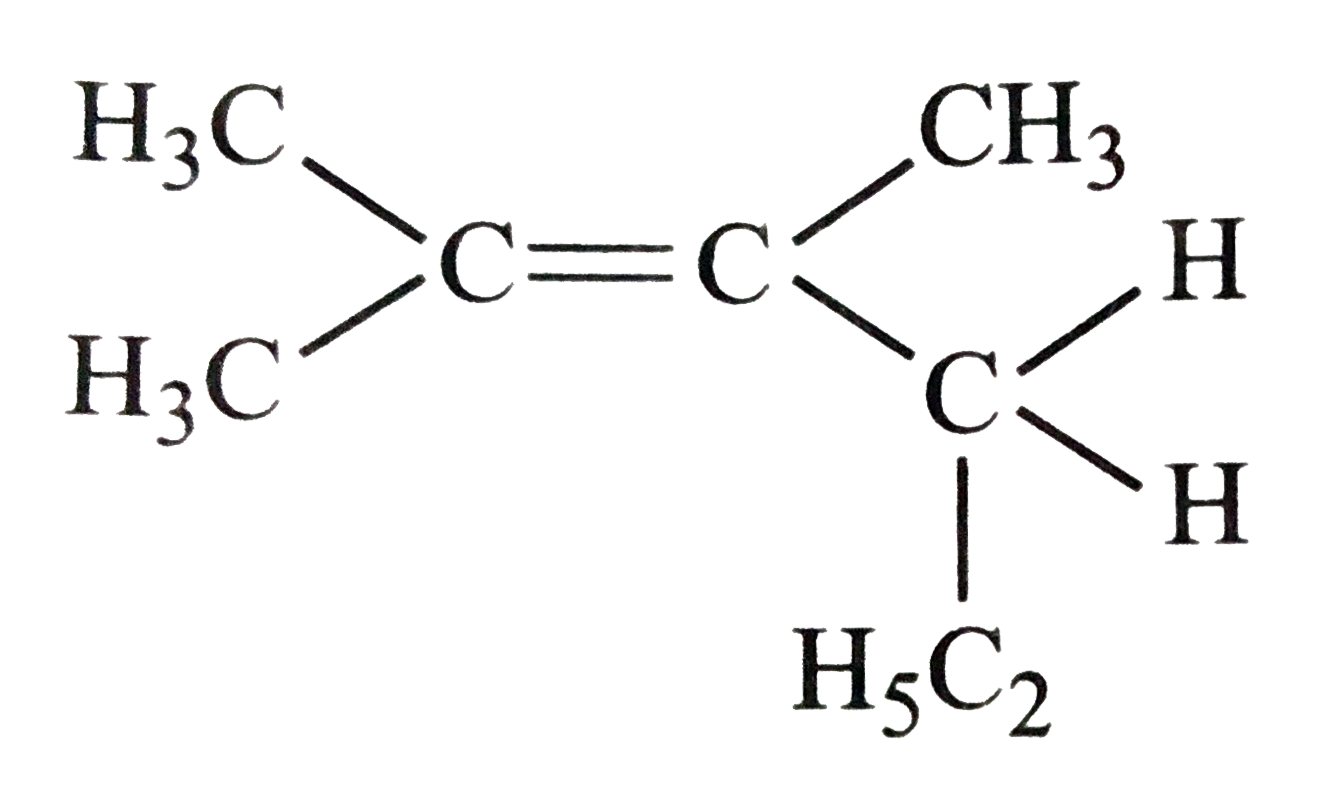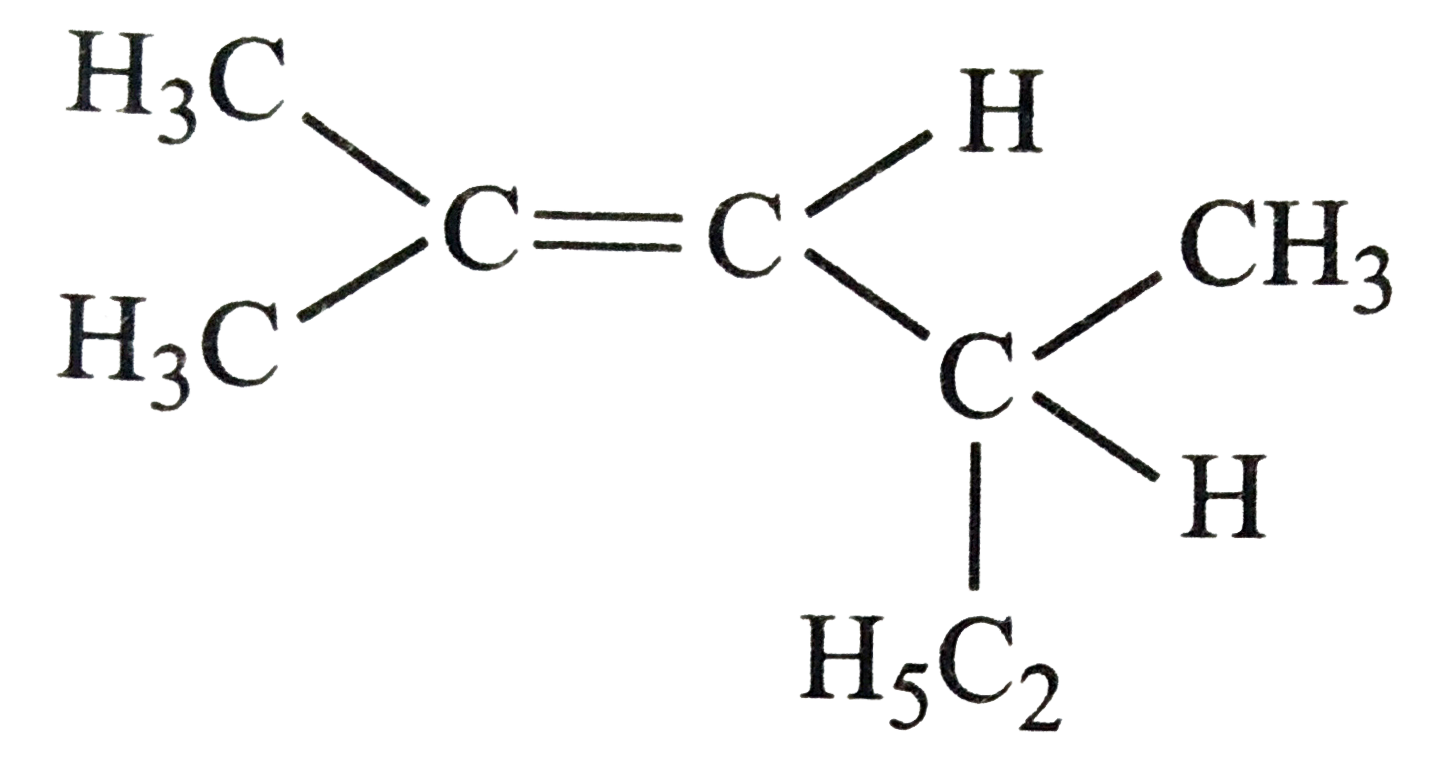There are five isomeric alkenes (A, B, C, D, and E) that require 1 mol of H2 per mole of alkene for hydrogenation and give the same product (F) on hydrogenation. F is an alkane having the lowest molecular mass and is opticalar mass and is optically active. Write the structures of the compounds from A to F.
Proceed as in Q. No. 6. Compound (F) will be (II). Therefore, five isomeric alkenes are:

Topper's Solved these Questions
- ALKANES AND CYCLOALKANESBook:CENGAGE CHEMISTRYChapter:ALKANES AND CYCLOALKANESExercise:Paragraph for problem
Explore 24 Videos
- ALKANES AND CYCLOALKANESBook:CENGAGE CHEMISTRYChapter:ALKANES AND CYCLOALKANESExercise:True and False
Explore 1 Video
- ALKANES AND CYCLOALKANESBook:CENGAGE CHEMISTRYChapter:ALKANES AND CYCLOALKANESExercise:SOLVED EXAMPLES
Explore 19 Videos
- ALKENES AND ALKADIENESBook:CENGAGE CHEMISTRYChapter:ALKENES AND ALKADIENESExercise:Single correct Answer
Explore 14 Videos
Similar Questions
There are six isomeric alkenes (A, B, C, D, E, and F) that require 1 mol of H2 per mole of alkene for hydrogenation and give the same product (G) on hydrogenation. G is an alkane having the lowest molecular mass and is optically active. Write the structure of compounds from A to G.
View SolutionGive the structure of an optically active alkene (A) having the lowest molecular mass, which on catalytic hydrogenation gives an optically inactive compound (B).
View Solution
Knowledge Check
X' is an optically active alkane having lowest molecular mass, Predict the structure of the major product obtained on monochlorination of 'X'.
ACH3−CH2−CH2−CH3∣C∣Cl−CH2−CH3BCH3−CH2−CH2−CH3∣CH−CH∣Cl−CH3CCl−CH2−CH2−CH2−CH3∣CH−CH2−CH3DCH3−CH2−CH2−CH3∣CH−CH2−CH2−ClX' is an optically active alkane having lowest molecular mass, Predict the structure of the major product obtained on monochlorination of 'X'.
ACH3−CH2−CH2−CH3∣C∣Cl−CH2−CH3BCH3−CH2−CH2−CH3∣CH−CH∣Cl−CH3CCH3−CH2−CH2−CH3∣CH−CH2−CH2−ClDCl−CH2−CH2−CH2−CH3∣CH−CH2−CH4An optically active compound having molecular formula C8H10 on ozonolysis gives acetone as one of the products. The structure of the compound is
A B
B C
C D
D
An optically active alcohol A (C6H10O) absorbs 2 mol of hydrogen per mole of A upon catalytic hydrogenation and gives a product B. The compound B is resistant to oxidation by CrO3 and does not show any optical activity Deduce the structures of A and B.
View SolutionAn optically active compound having molecular formula C8H10 on ozonolysis gives acetone as one of the products. The structure of the compound is
View SolutionAn optically active compound having molecular formula C8H16 on ozonolysis gives acetonic as one of the products. The structure of the compound is:
View SolutionAn optically active compound having molecular formula C8H16 on ozonolysis gives acetone as one of the products. The structure of the compound is
View SolutionAn optically active alkene with the molecular fomula C6CH12 which upon hydrogenation gives optically inactive alkane is
View Solution

